- Learning time
- 10 minutes
- First play time
- 40 minutes
Fae
Designed by: Leo Colovini
Fae (previously published as Clans) is a very simple game in terms of rules and plays in a breezy 20-30 minutes, but it’s also kind of opaque in what it’s doing – not least because the players all have a kind of hidden role. Or semi-hidden.
The board shows a mythical landscape broken into to regions, with each region containing five territories. At the start of the game, a druid occupies each territory: there are five colours and each region is given one of each colour. Beyond that, where they’re placed is entirely random.
On a player’s turn all they do is move a druid, or group of druids, from one territory into another. The only rules to follow is that druids can cross rivers but not lakes, and they will never enter an empty territory – instead they always seek out more druids. They’re looking to party: the moment any druid or druids are isolated – they have no neighbours and therefore nowhere to go – that territory is scored: each colour present scores points equal to the total number of druids. For instance, a territory with two blue, two yellow and one orange druid will score five points for blue yellow and orange.
There are two catches to bear in mind. One, whenever these scorings occur, the player who triggered them takes a scoring card. Each card you gather is worth an additional point at the end of the game, but the cards also provide a twist to scoring: on the cards are a blessed territory and a cursed territory. If the scoring triggered is on the blessed territory, then points are doubled. If it’s on the cursed territory, the druids score nothing! (Also, if a scoring is triggered with all coloured druids present, any single druids are removed before scoring)
This continues until all the scoring cards have been claimed, at which point players add their collected cards to their score. One final, but hugely critical, catch: all colours accrue points, but players do not reveal which colour they are until the end of the game!
The guru's verdict
-
Take That!
Take That!
There's some take-that in the game, but considering how players don't actually know what colours the other players are (at least at the start - theories may be formed during play of varying strengths...) it feels more inadvertent than targeted.
-
Fidget Factor!
Fidget Factor!
Low to moderate. Fae can be played at a zip, with each turn a simple matter of shuffling the druids about. But who goes where has import, so some players may need the odd bit of thinking time, particularly toward the end.
-
Brain Burn!
Brain Burn!
Fae's rules aren't heavy at all - we've explained almost everything here - but the challenge is to maximise your points without, ideally, revealing your identity.
-
Again Again!
Again Again!
Fae is Fae, it's not a hugely immersive game and it doesn't tell much of a story, relying on how achieving your objectives compromises the need to hide your identity. But with a variable set-up and random assignment of (secret) player colours, it's still a bunch of fun.

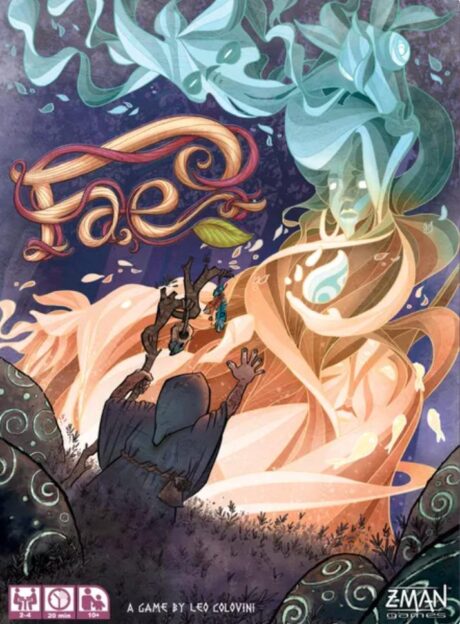
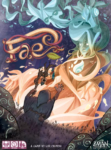
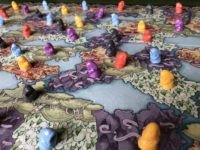

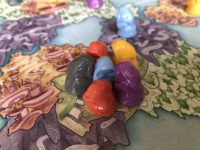
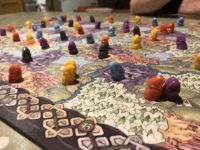
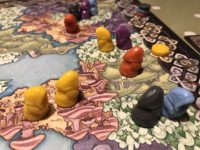


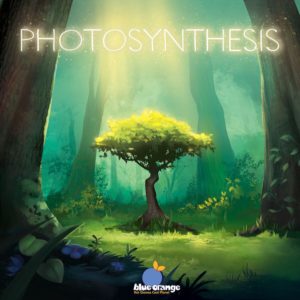

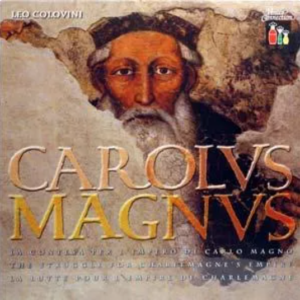

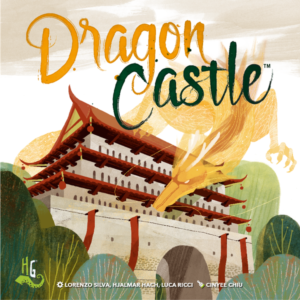
Sam says
So simple mechanically, and yet so devious with it, the first time we played Fae we played it twice more in the same sitting. Designer Leo Colovini specialises in simple rulesets that conjure intriguing player dynamics, and while this is maybe not his best it's probably one of his most accessible - a quirky game combining area control, deduction and bluff that plays in 20 minutes. What's not to like?